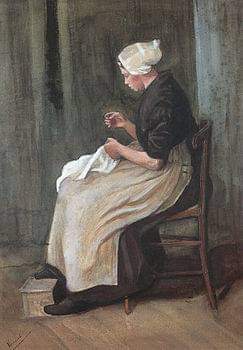Ladies and Embroidery

The history of sewing and embroidery takes us back a few millennium when they were discovered on sculptures, graffiti and ceramics, paintings of the twelfth century BC that reproduced fabrics adorned with needle embroidery.
In the years of Arab domination, Sicily played a decisive role in the art of embroidery, the Saracens opened specialized workshops (rakam) of drawing, initially applied to the clothes of the nobles, tapestries and sacred furnishings.
A century later this practice spread throughout Europe. In the Middle Ages the peasant women were so poor that they sewed the modest clothes they wore themselves while the noblewomen took care of women’s work, mainly weaving and embroidery.
In the Renaissance, women, still girls, were entrusted to the nuns of the convents to learn how to read, write, spin and weave.
Spindle, loom and needle were the tools common to all women, aristocrats and commoners.
Between the end of the 19th and the beginning of the 20th century, the craft of a seamstress replaced that of a servant. Many women from the countryside left alone for the cities where the great tailors had developed.
The consumption of ready-made clothes, haute couture and linen thanks to technological innovations had allowed a new organization of work. Alongside the large tailors, small workshops were built where enterprising women, after having attended sewing courses and bought a sewing machine in installments, started their own businesses.
In the society of the right-thinking people of the time this profession was appreciated as it allowed women to be autonomous without sacrificing household and family commitments.

Over time it diversified with new figures: the knitter, the bustaia, the furrier, the hatmaker. Despite their large number and the grueling work to which they were subjected, not subject to any protection, their poverty was amplified by the role of men and the factions connected to them. The figure of the tailor represents a piece of the history of the woman who tried to free herself from the slavery in which she had been confined for millennia.
Over time it diversified with new figures: the knitter, the bustaia, the furrier, the hatmaker.
Despite their large number and the grueling work to which they were subjected, not subject to any protection, their poverty was amplified by the role of men and the factions connected to them.
The figure of the tailor represents a piece of the history of the woman who tried to free herself from the slavery in which she had been confined for millennia.
